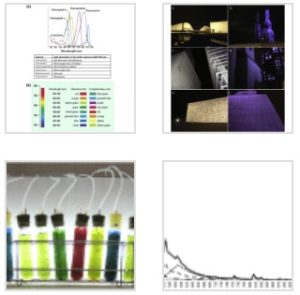P Sanmartín, D Vázquez-Nion, J Arines… – International …, 2017
The quantity (duration and intensity) and quality (colour or wavelength) of light are key factors involved in regulating growth and physiological processes in photosynthetic organisms. As a preliminary approach to developing biocolonization control strategies based on urban ornamental lighting, this study aimed to evaluate how coloured cellophane film affects the quality and intensity of light and, therefore, the growth and colour of photosynthetic organisms. We used red, yellow, green and blue cellophane film (rather than coloured LEDs) to generate different light qualities (by cancelling the spectral components in certain bands of the visible electromagnetic spectrum) at different photon flux densities. We then used the coloured cellophane to cover phototrophic cultures, derived from natural biofilm growing on a historic granitic building and mainly comprising green algae and cyanobacteria, in order to promote specific physiological responses. The blue cellophane inhibited growth of the test culture. By contrast, the yellow cellophane did not significantly decrease the biomass, pigment or EPS content relative to uncovered, control cultures. The different coloured cellophane covers also generated colour changes in the culture; e.g. the red cellophane produced notable greening, whereas the green cellophane enhanced the redness of the culture.
… The experimental set-up is shown in Fig. 3. The quality (spectrum) and quantity (intensity of radiation) of the light after passing through the cellophane film was measured via a StellarNet Blue-Wave spectrometer by placing the sensor inside the empty photobioreactors. Fig. …
Read More…






